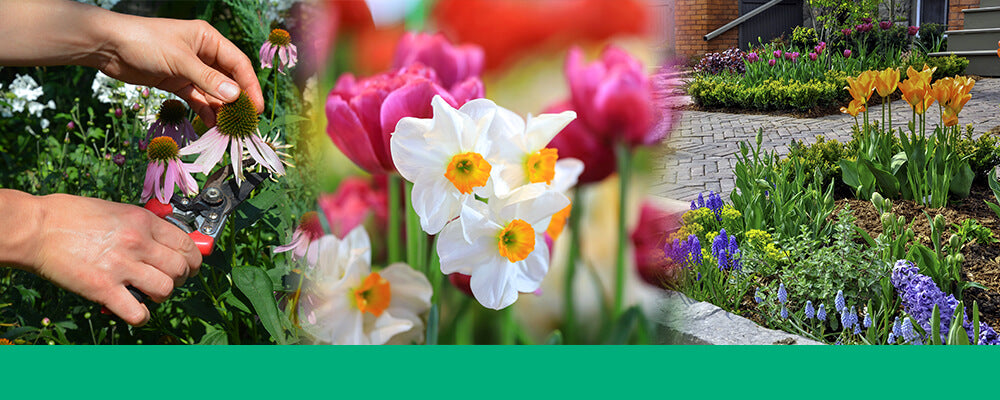Care 101: What To Do With Spent Bulb Foliage
Posted by Brent & Becky's Admin on


Every piece of a plant has a vital role to play. Bulb leaves, for instance, are hardworking solar collectors. They need exposure to sunlight and water to manufacture starches and sugars, which in turn feed the roots or the plant's bulb.
When it comes to plants like trees and shrubs, and some perennials that grow throughout the year, we prune them to shape them into a particular shape or keep them a particular size. But if you are wondering if you should prune your bulb leaves, the answer, in short, is yes - but timing is everything.
Flowering bulbs only bloom for a short period of time, so we don't want to prune back those important solar collectors until they have completed their job for the season.

So When Should You Prune Bulb Leaves?
As solar collectors, bulb leaves' task is to essentially recharge the battery of the plant (which is the bulb). The general rule of thumb is that it typically takes bulb leaves when exposed to full sunlight, at least eight weeks to complete this job. You can tell that bulb leaves have finished their work when they start to turn yellow or start falling down.
If bulbs are not in full sun, the leaves tend to get longer and often fall over a lot quicker. They just don't recharge the batteries in the shade as well as they do in full sun. Unless, of course, they are part of the small family of shade-tolerant bulbs.
Typically, after eight weeks, your bulbs will have finished blooming, and that is when to cut the foliage off at its base.
What Should You Do With The Foliage?
Since your bulb leaves and foliage are no longer of use to the bulb, you can cut them off at the base and compost them to bring more nutrients and minerals to your soil.
Flowering bulbs only bloom for a short period of time, so we don't want to prune back those important solar collectors until they have completed their job for the season.
What Not To Do With Your Bulb Leaves
While there was once a time when it was common practice to tie back, braid, or even put elastics around bulb leaves, we are here to tell you that it is not a good idea. Bulb foliage needs sunlight and air to photosynthesize, and by tying it or putting rubber bands around it, you will suffocate the plant and make it susceptible to catching a fungus that can cause rot. Instead, just cut it off at the base and allow it to grow back the following year.

Is There Ever A Reason To Prune Bulb Leaves While The Plant Is In Bloom?
There is only one exception to the no pruning of bulb leaves rule, which is actually a fine art form performed in China in celebration of the Chinese New Year with a plant called a Chinese Sacred Lily. As the shoots start to come out, they nick them in a very particular way with a scalpel, making the leaves grow in particular shapes. Of course, this is not a common practice in gardens here in the United States, but an intriguing use of the concept of pruning bulb foliage nonetheless.
How To Prune Bulb Flowers
Roughly 30 percent of the energy produced by a bulb eventually goes into making seeds for the future once it has finished blooming. As almost all bulbs are produced asexually by division rather than sexually by seeds, it does pay to remove the old flowers entirely as soon as they start to fade, which is a process known more commonly as deadheading.
Deadheading bulb flowers (removing the entire flower at the neck when it has finished blooming) allows the plant to take the energy that it would otherwise use to make seeds and send it back to the bulb. In turn, you should see more and bigger blooms come up the following year.
Whether you are caring for spring, summer, or fall bulbs, the process remains the same. Every one of them needs that roughly eight-week window to allow their little solar collectors to recharge their battery, and then their job is completed. We hope these basic principles help to keep your garden blooming even more beautifully year after year.
Share this post
- Tags: bulb, bulb care, bulb gardening, bulb plants, bulbs, bulbs for cutting, bulbs in blogs, care, care tips, flowering bulbs, foliage, garden care, pruning


